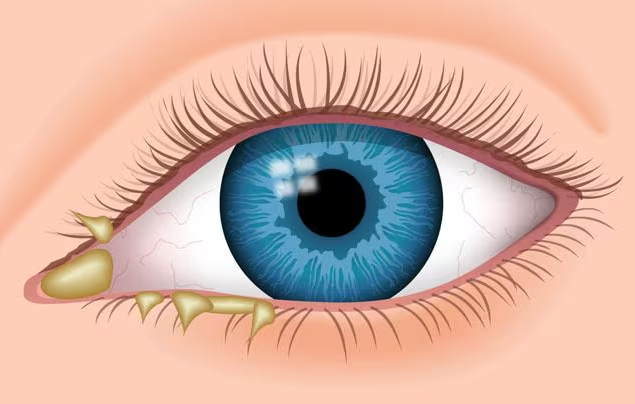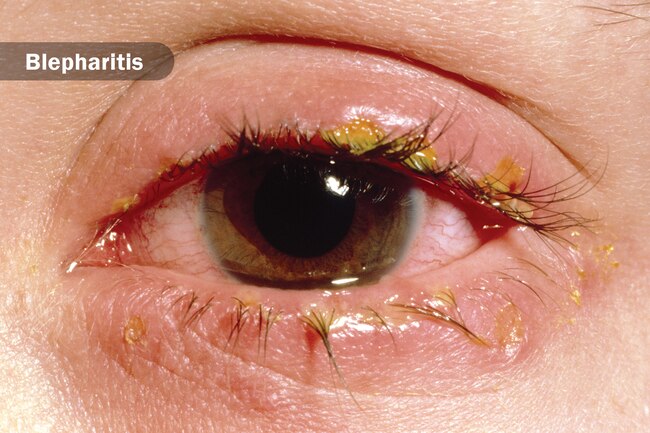Waking up to find yellowish crust in the corners of your eyes is a common experience. This substance, often referred to as “eye gunk,” “sleep,” or “eye boogers,” is medically known as rheum. Rheum is a combination of mucus, oil, skin cells, and other debris that accumulates in the eyes during sleep. While typically harmless, understanding its causes and when it might indicate an underlying issue is essential for maintaining eye health.
What Is Rheum?
Rheum forms when the eyes produce mucus and oils to keep the surface moist and trap debris. During the day, blinking helps to wash away this mixture through the tear ducts. However, during sleep, the absence of blinking allows rheum to accumulate and dry out, leading to the crusty residue found upon waking. This process is a normal part of the eye’s self-cleaning mechanism and usually doesn’t signify any health concerns.

Causes of Yellow Eye Discharge
While rheum is generally benign, certain conditions can cause excessive or colored discharge, particularly yellow, which may indicate an infection or other eye issues:
- Conjunctivitis (Pink Eye): An inflammation of the conjunctiva, often caused by bacterial or viral infections, leading to redness, irritation, and yellow or green discharge.
- Blepharitis: Inflammation of the eyelids that can result in crusty debris at the base of the eyelashes and yellow discharge.
- Stye: A painful, red bump on the edge of the eyelid caused by a bacterial infection, often accompanied by pus and yellow discharge.
- Dacryocystitis: An infection of the tear sac due to a blocked tear duct, leading to pain, redness, and yellow discharge from the inner corner of the eye.
- Dry Eye Syndrome: A condition where inadequate tear production leads to dry, irritated eyes and may cause stringy or sticky discharge.
When to Seek Medical Attention
While occasional eye discharge is normal, certain signs warrant a consultation with an eye care professional:
- Persistent redness or pain in the eyes
- Vision changes or sensitivity to light
- Swelling around the eyes
- Thick, yellow, green, or foul-smelling discharge
These symptoms could indicate infections or other conditions requiring medical treatment.

Maintaining Eye Hygiene
Proper eye hygiene can help prevent excessive discharge and reduce the risk of infections:
- Regular Cleaning: Gently wash your eyelids with a clean, damp cloth to remove any crust or debris.
- Avoid Touching Eyes: Keep hands clean and avoid rubbing your eyes to prevent introducing bacteria.
- Manage Allergies: Control allergy symptoms to reduce eye irritation and discharge.
- Proper Contact Lens Care: Follow recommended guidelines for cleaning and replacing contact lenses.
Yellow eye discharge upon waking is typically a normal occurrence resulting from the eye’s natural cleaning processes during sleep. However, if accompanied by other symptoms such as pain, redness, or vision changes, it may indicate an underlying condition that requires medical attention. Maintaining good eye hygiene and being aware of changes in eye discharge can help ensure optimal eye health.
Note: This information is intended for educational purposes and should not replace professional medical advice. Always consult with a healthcare provider for personalized guidance.

















